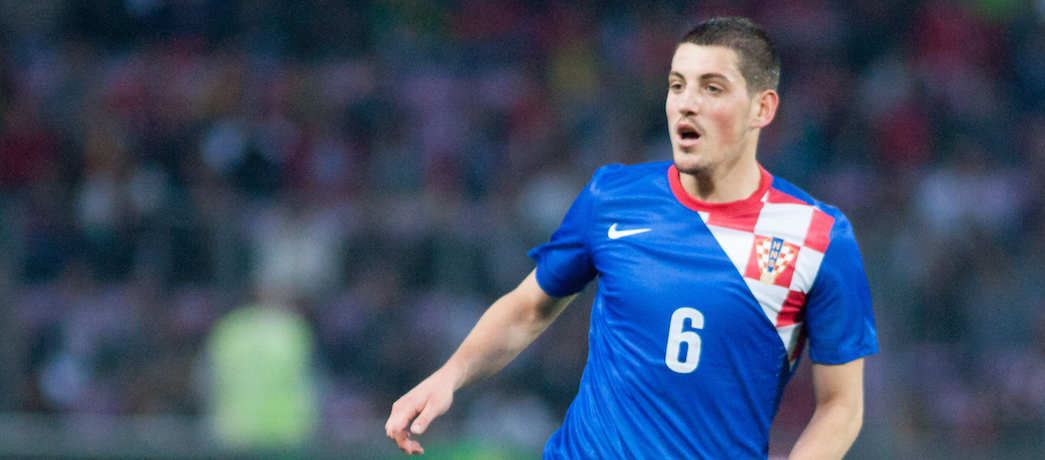In ‘Megalopolis,’ Clodio Pulcher has parallels with both Donald Trump and Adolf Hitler. Courtesy of American Zoetrope
No film this year has had as polarizing a reception as Francis Ford Coppola’s Megalopolisa sci-fi epic that had been in the works for over 40 years. Critics have been divided on whether the movie, with its convoluted plot and ostentatious (but simultaneously cheap-looking) CGI, is a stroke of innovative movie genius or a vacuous ego-stroke.
Something that hasn’t been discussed as much is the film’s use of Nazi motifs.
In one of the movie’s main storylines, Clodio Pulcher (Shia LeBeouf), the cousin of protagonist Cesar Catilina (Adam Driver), attempts to gain control of the city of New Rome.
Clodio — even more so than his billionaire grandfather Crassus (Jon Voight) — seems based, at least in part, on Donald Trump — a man who presents himself as a political outsider who will uplift the unheard voices of the common folk with the slogan “Make Rome Great Again,” even though he’s the wealthy, wastrel son of the head of the National Bank.
At one point during a rally, he steps up onto a tree trunk carved into the shape of a swastika to deliver a speech. As a Jew in the audience, I immediately had a lot of questions.
Why is this tree carved into a swastika? Who carved it? Was it for the rally or does New Rome always have swastikas in its parks? If for the rally, why? I know that the swastika was a decorative motif in ancient Rome, and in other cultures, but Coppola’s New Rome doesn’t appear to play out in a context where World War II never happened and Clodio never advocates for ethnic cleansing or makes any racially provocative remarks. So what’s it doing there?
Later, Huey, Clodio’s sidekick, pays homage to the notorious racists John Wilkes Booth and Adolf Hitler. After attempting to assassinate Cesar, he gives a Nazi salute and shouts Booth’s infamous line: “Sic Semper Tyrannis!” (“Thus always to tyrants.”)
Towards the end of the film, Coppola presents a montage of human history, including clips of Hitler and marching Nazis.
While Clodio is a power-hungry maniac, he has less in common with Hitler than he does with Trump – a love of money, a penchant for sex scandals – yet he still does not flirt with white supremacists. The movie may be Coppola’s way of expressing his fears about society losing its creative edge under capitalism, but using Nazi symbols to play up a comical villain undermines the true evil the Nazi party represented.

Megalopolis is not the first piece of media to inappropriately use Nazism to make its story more dramatic. Star Wars named its infantry Storm Troopers. Marvel’s fictional terrorist organization Hydra began as a part of the Nazi movement, but its imagined history of committing the very real horrors of the Holocaust has become so diluted over the years that today you can buy merchandise that says “Hail, Hydra!” on it.
But the Nazis were not just shadowy, comic book villains. And Coppola’s use of Nazi symbols as a stand-in for a general political evil diminishes the memories of their victims to an afterthought. This is not only problematic; it’s lazy.
There is nothing wrong with having Nazis in your fictional media – as long as they are the bad guys, of course – but when we remove their dangerous ideology and boil them down to a rebellious gang of political misfits, we risk turning Nazism and the Holocaust into edgy tropes for filmmakers to play with as they please.
And, if you need an image of Hitler to make the audience know who the bad guy is, that’s just poor storytelling.

I hope you appreciated this article. Before you move on, I wanted to ask you to support the Forward’s award-winning journalism during our High Holiday Monthly Donor Drive.
If you’ve turned to the Forward in the past 12 months to better understand the world around you, we hope you will support us with a gift now. Your support has a direct impact, giving us the resources we need to report from Israel and around the U.S., across college campuses, and wherever there is news of importance to American Jews.
Make a monthly or one-time gift and support Jewish journalism throughout 5785. The first six months of your monthly gift will be matched for twice the investment in independent Jewish journalism.
— Rachel Fishman Feddersen, Publisher and CEO

















